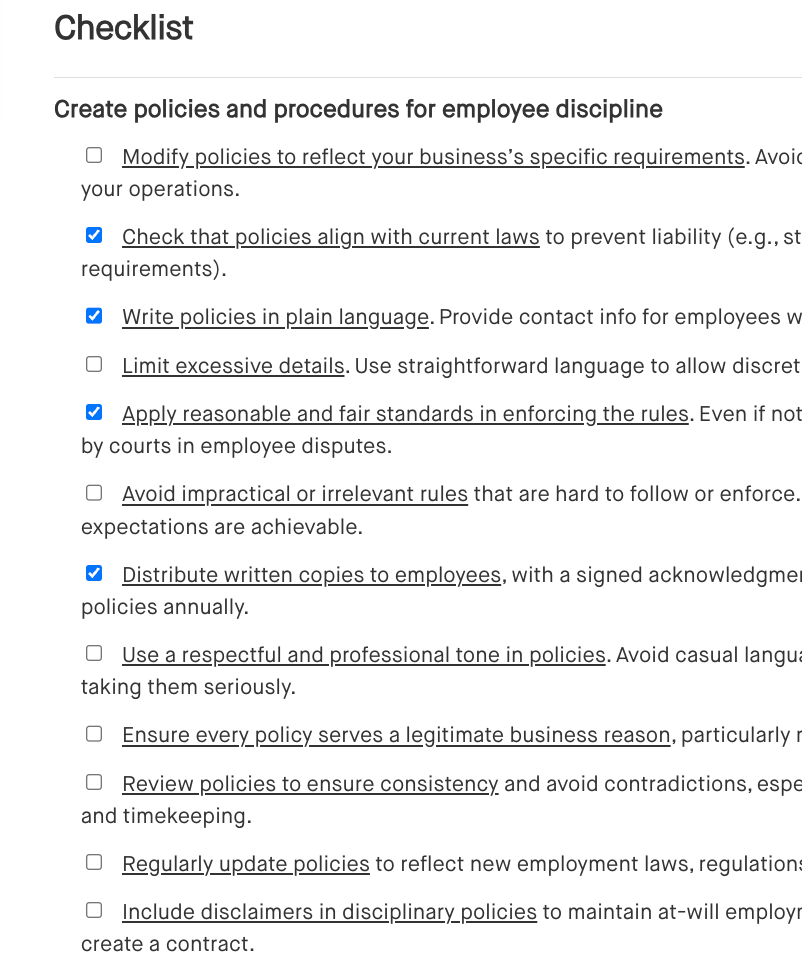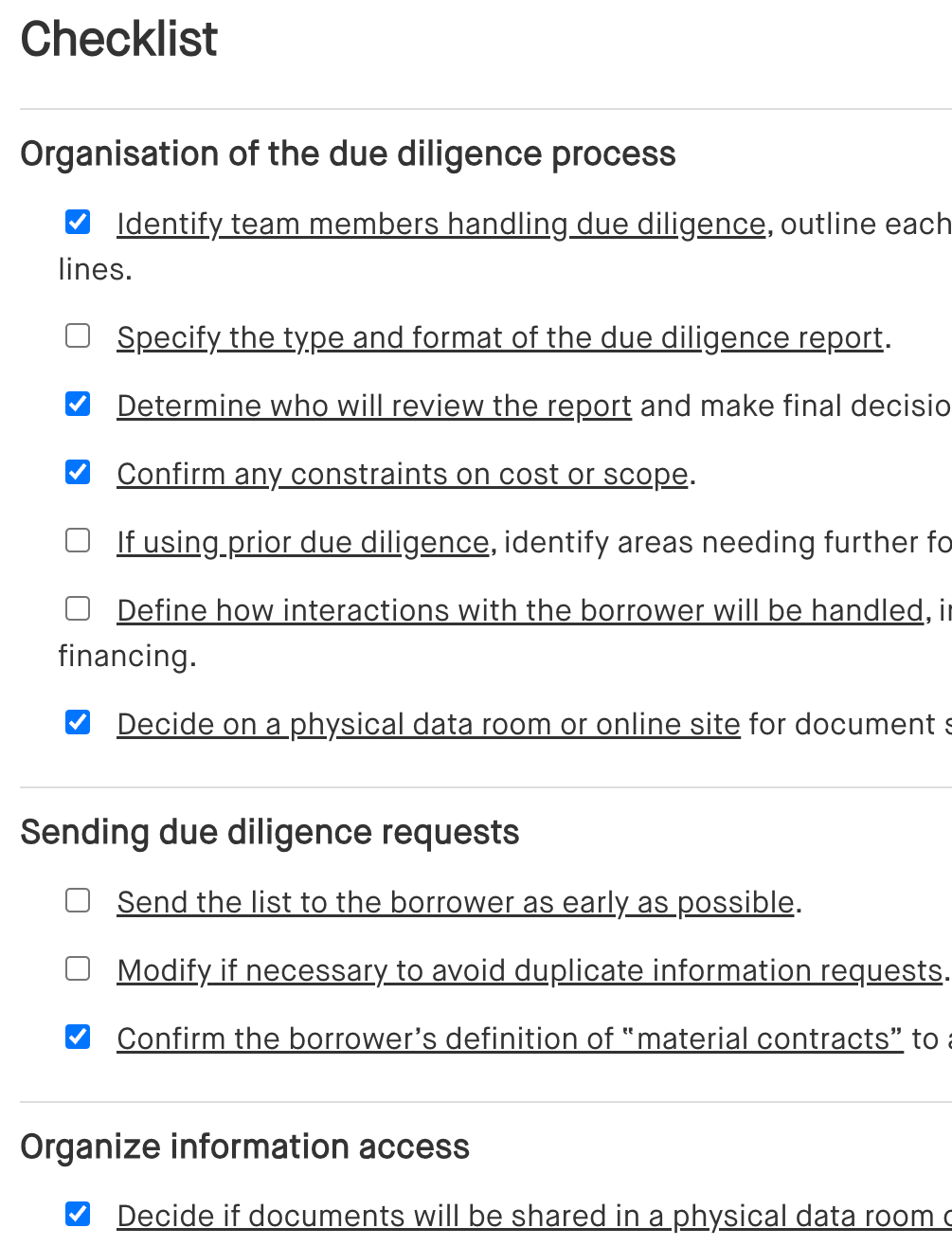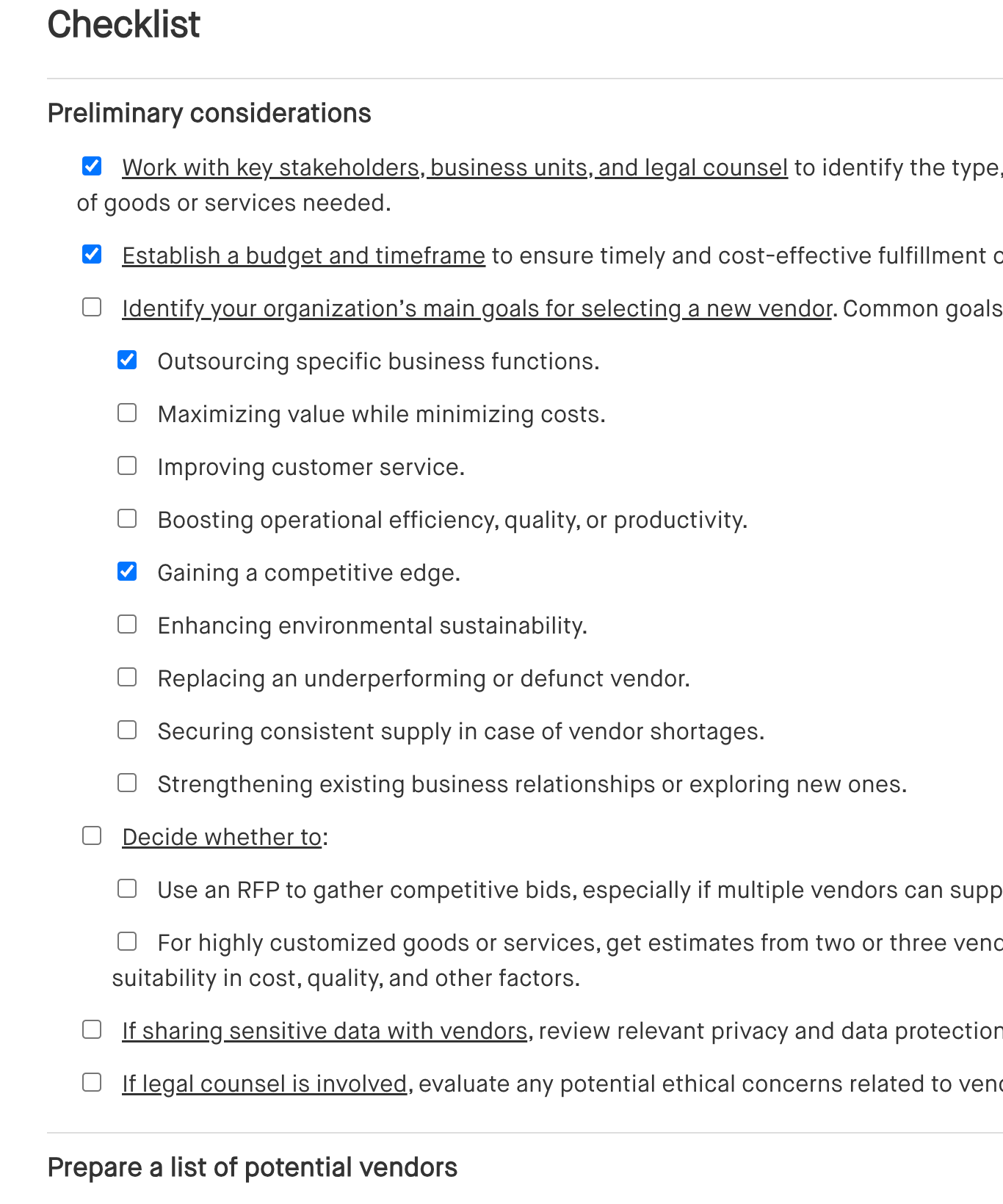Employee misconduct on social media: Free checklist
Employee misconduct on social media checklist
In today's digital age, social media plays a significant role in workplace dynamics. Employees often express their thoughts and experiences online, which can sometimes lead to misconduct. This checklist serves as a practical tool for employers to navigate the complexities of employee behavior on social media. It outlines essential considerations and best practices to help assess incidents of misconduct effectively, ensuring compliance with labor laws while maintaining a fair and respectful workplace.
By using this checklist, employers can address potential issues proactively, protect employee rights, and foster a positive organizational culture.
How to use this employee misconduct on social media checklist
This employee misconduct on social media checklist serves as a practical tool for addressing and managing incidents related to employee behavior online. Here’s how to use it effectively:
- Review each section: Start by carefully examining all the sections of the checklist to understand the key factors involved in assessing social media misconduct.
- Follow the steps systematically: Work through each item in the checklist sequentially, ensuring that you address all relevant aspects before making any decisions or taking action.
- Document your process: Keep records of your findings and the steps you took while using the checklist. This documentation will be valuable for reference and may be necessary for legal compliance.
- Use it during investigations: Apply the checklist as a guide during any investigations into social media misconduct, helping you to stay organized and thorough in your approach.
- Implement for policy development: Utilize the insights gained from the checklist to inform the development or revision of your social media policies, ensuring they align with best practices and legal standards.
- Regularly revisit and update: Make it a habit to regularly review and update the checklist to reflect changes in laws, company policies, or social media trends, keeping your approach relevant and effective.
Checklist
Benefits of using an employee misconduct on social media checklist
An employee misconduct on social media checklist helps you navigate the complexities of online behavior while maintaining a fair workplace environment. Here’s how it helps:
- Ensure consistent handling: By providing a structured framework for assessing misconduct, you create uniformity in how cases are addressed, reducing the risk of discrimination and bias in disciplinary actions.
- Enhance legal compliance: The checklist guides you in adhering to labor laws, such as the NLRA, protecting both your organization and employees from potential legal issues related to retaliation or wrongful termination.
- Offer clear guidelines: It outlines specific steps for evaluating social media posts, helping you make informed decisions about appropriate responses and disciplinary measures tailored to each situation.
- Facilitate open communication: By clarifying employee rights and employer responsibilities, the checklist fosters a culture of transparency, encouraging employees to express concerns without fear of unjust repercussions.
- Proactively manage risks: Using the checklist enables you to identify potential social media issues early, allowing you to take preventive measures that protect your company’s reputation and maintain a positive workplace atmosphere.
Frequently asked questions (FAQs)
Q: What is the purpose of the employee misconduct on social media checklist?
A: The checklist is designed to help employers assess and manage incidents of employee misconduct on social media while ensuring compliance with labor laws and protecting employee rights.
Q: Who should use this checklist?
A: This checklist is intended for HR professionals, managers, and team leaders who need to address social media misconduct within their organization.
Q: How can this checklist help prevent legal issues?
A: By following the checklist, employers can ensure they are adhering to relevant laws, such as the NLRA, which reduces the risk of legal claims related to retaliation or wrongful termination.
Q: Can this checklist be used for all types of social media misconduct?
A: Yes, the checklist provides a comprehensive framework that can be applied to various situations involving employee behavior on social media, including offensive posts, harassment, or disclosures of confidential information.
Q: How often should I review and update the checklist?
A: It’s recommended to review and update the checklist regularly—at least annually or whenever there are changes in laws, company policies, or social media trends—to ensure it remains effective and relevant.
Q: What should I do if I find a violation of the company's social media policy?
A: If a violation is identified, follow the checklist to assess the situation, document your findings, and determine appropriate disciplinary actions while ensuring consistency and compliance with legal standards.
Q: Is this checklist legally binding?
A: While the checklist provides valuable guidance, it is not a legally binding document. It is advisable to consult with legal counsel for specific legal advice related to employee misconduct and labor laws.
This article contains general legal information and does not contain legal advice. Cobrief is not a law firm or a substitute for an attorney or law firm. The law is complex and changes often. For legal advice, please ask a lawyer.


